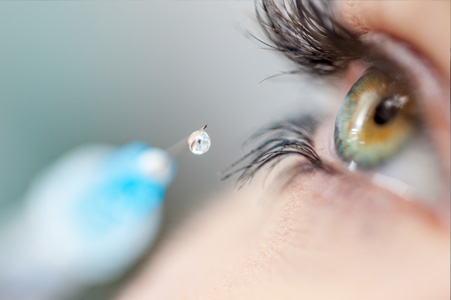Intravitreal Injections in Brisbane, QLD
Your guide to Intravitreal Injections.
What are Intravitreal Injections?
Sometimes, the most effective way to treat ocular conditions is to administer medication directly into the eye. Intravitreal injections deliver medication to the vitreous, or gel-like substance filling the center of the eye, where it can be absorbed by the retina and macula. Depending on the type of medication used, intravitreal injections can reduce inflammation, prevent the growth of abnormal blood vessels and/or treat bacterial or viral infections.
The retinal specialists at The Eye Health Centre are extremely knowledgeable about how and when to recommend intravitreal injections. Our entire team goes above and beyond to make the experience as painless and stress-free as possible.

When Are Intravitreal Injections Used?
Intravitreal injections are recommended to treat certain disorders affecting the retina and macula, including the following:
- Diabetic retinopathy – when blood vessels in the retina leak and new, abnormal blood vessels form
- Macular edema – swelling in the macula, or the part of the retina that controls central and detail vision
- Uveitis – inflammation in the uvea, or middle layer of tissue in the eye
- Retinal vein occlusion – an obstruction of the veins that carry blood away from the retina
- Endophthalmitis – infection of the eye
When administered by a qualified professional, intravitreal injections are safe and serious complications are very rare.
Intravitreal Therapy Treatment Details
No one likes to think about getting a shot in the eye, but the process is completely painless. Our doctors work quickly yet effectively to make the experience calm and relaxed for you. We can conveniently perform the injections in our office.
Before starting the injections, we will place special drops in your eyes to widen, or dilate, your pupils. While you relax face up, we will clean your eyes and eyelids to kill bacteria that live around the eyes. We will also place numbing drops in your eyes and use a small device to gently hold your eyelids open. This should not be painful or stressful.
It only takes a few moments to inject the medicine into your eye with a small needle. We will ask you to look in a particular direction based on where the medication needs to go. Some patients report a sensation of slight pressure, but pain is very rare.
Aftercare
After the injections, we will place antibiotic drops in your eyes as a precautionary measure. For some patients, we measure intraocular pressure following the injections. A slight spike is common and intraocular pressure should return to normal within a few minutes.
Depending on the condition, the injections may need to be repeated regularly. Repeat intravitreal injections are usually well tolerated. We use diagnostic tests such as fluorescein angiography and optical coherence tomography to monitor the effectiveness of the injections and determine the need for repeat injections.
Do you have a question or concern about your eye health? To discuss your condition with an experienced ophthalmologist or optometrist, please contact The Eye Health Centre

